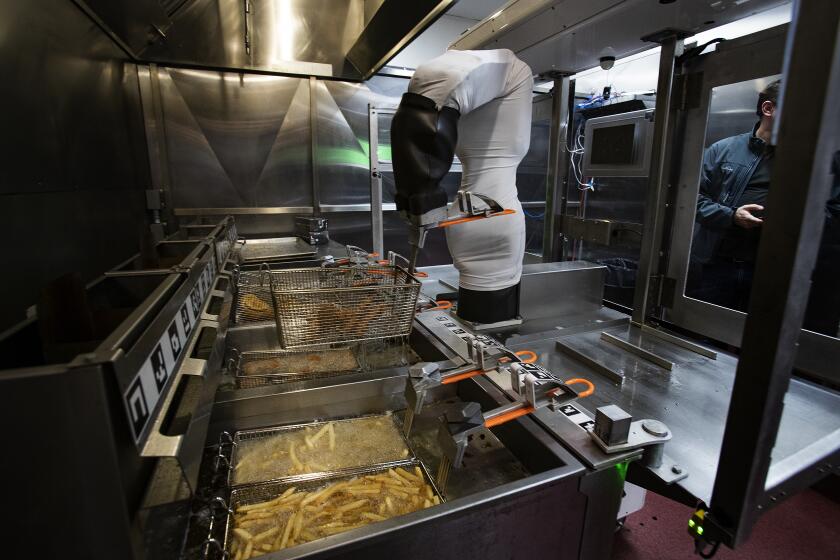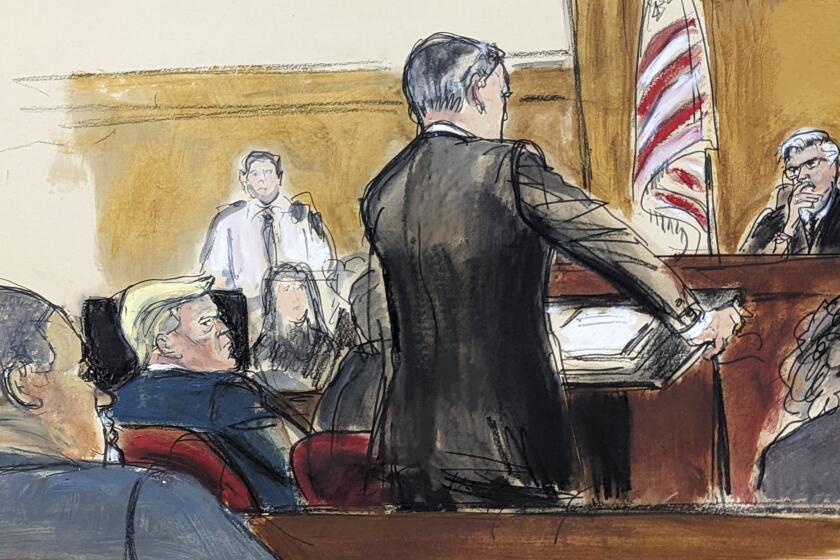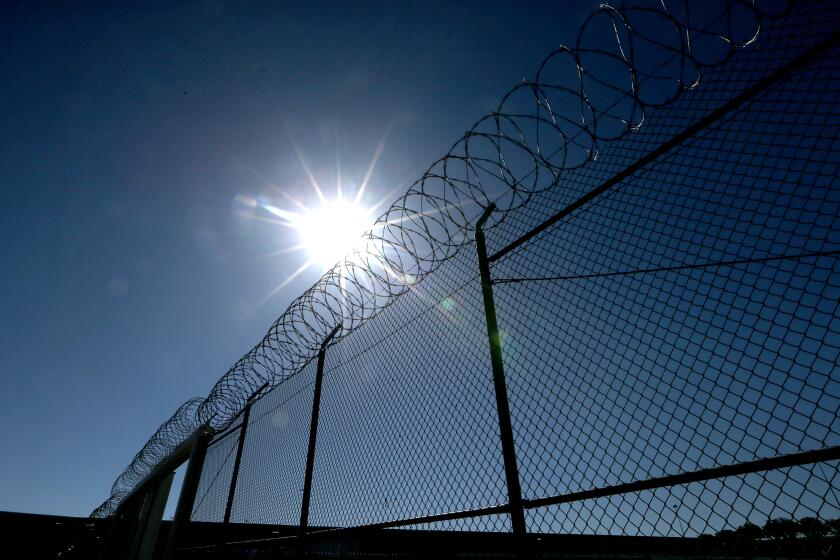Op-Ed: Roosevelt High School’s historic R Building should be preserved, not demolished
Beginning on March 1, 1968, thousands of students walked out of five predominantly Latino high schools on the Eastside of Los Angeles. The students were protesting substandard facilities, a lack of books recognizing Latino culture, overcrowding and the decidedly racist attitudes of administrators and teaching staff, among other issues. The East L.A. Blowouts, as the protests came to be known, lasted for a week, growing to include some 15,000 students across seven schools.
At Roosevelt High School in Boyle Heights, alarmed administrators locked the school gates to prevent students from leaving, and Los Angeles Police Department squad cars surrounded the campus, to no avail. The primary setting for Blowout activities on the Roosevelt campus — the site of both a student sit-in and an assembly held by Los Angeles Unified School District officials — was the school’s original auditorium and classroom building, commonly known as the R Building.
The R Building, built in 1922, is one of 12 structures that make up a historic district. Because of the Blowouts, this district has been determined to be eligible for listing in the National Register of Historic Places. Nevertheless, two months after the 50th anniversary of the Blowouts, L.A. Unified will soon vote to demolish the R Building, along with Roosevelt’s gymnasium and other buildings on the campus.
The decision comes as part of a proposed plan to modernize the campus. The Roosevelt High School Comprehensive Modernization Project will undertake some $173 million in upgrades, including critical seismic and accessibility improvements. It will also raze everything of historical significance. L.A. Unified will seal Roosevelt’s fate on May 8, when it votes to certify the project’s final environmental impact report.
There is no question that Roosevelt’s students need and deserve the safest and highest quality facilities possible. Roosevelt High School should be modernized. But renovation need not come at the expense of historic preservation.
There are clear, if unspoken, racial and cultural criteria for what gets deemed worthy of historic significance in this United States.
There are clear, if unspoken, racial and cultural criteria for what gets deemed worthy of historic significance in this United States. Most of the sites that are included in the National Register of Historic Places and in the National Historic Landmarks Program recognize the accomplishments and experiences of white Americans. According to the National Park Service, which oversees both the register of historic places and the landmarks program, fewer than 5% of these protected sites are related to the histories of nonwhite communities, an imbalance the Obama administration fought to correct.
Starting in 2010, the National Park Service began a series of studies on unrepresented communities. As a result of this research, the park service’s landmarks committee identified many new sites as eligible for national historic landmark status — the highest recognition.
I played a small part in the Latino study. As part of the review, many Los Angeles neighborhoods were surveyed. The five East Los Angeles schools where the Blowouts began were deemed eligible for landmark status — for their architectural merits, yes, but primarily for the role they played in the social and political history of the city. Both the State Office of Historic Preservation and L.A.’s Office of Historic Resources have also identified the schools as historically significant.
Roosevelt High School’s R Building should be preserved, and there is no question that it can be done. L.A. Unified maintains that the building’s configuration of classrooms no longer meets educational standards. That may be true, but demolition is far from the only option.
We could try building adaptation, an accepted practice worldwide in which partial preservation is combined with new construction. The Roosevelt campus encompasses more than 22 acres; this abundance of land affords flexibility. Surely L.A. Unified can come up with an alternative plan to preserve Roosevelt’s history while also upgrading its buildings — something the district has managed to do at other historic campuses, including John Burroughs Middle School in Hancock Park and San Pedro High School in San Pedro.
Schools have been flash points in some of the most important events in American history. Before Brown vs. Board of Education in 1954, there was Mendez vs. Westminster School District of Orange County, which in 1947 laid the groundwork for school desegregation throughout California. The five schools that sparked the East L.A. Blowouts are witnesses to a history that should not be erased. L.A. Unified needs to find the will to revitalize and preserve Roosevelt High School’s R Building while it still can.
Luis Hoyos is an architect, a professor of architecture at Cal Poly Pomona and a member of the Advisory Council on Historic Preservation.
Follow the Opinion section on Twitter @latimesopinion or Facebook
More to Read
A cure for the common opinion
Get thought-provoking perspectives with our weekly newsletter.
You may occasionally receive promotional content from the Los Angeles Times.






